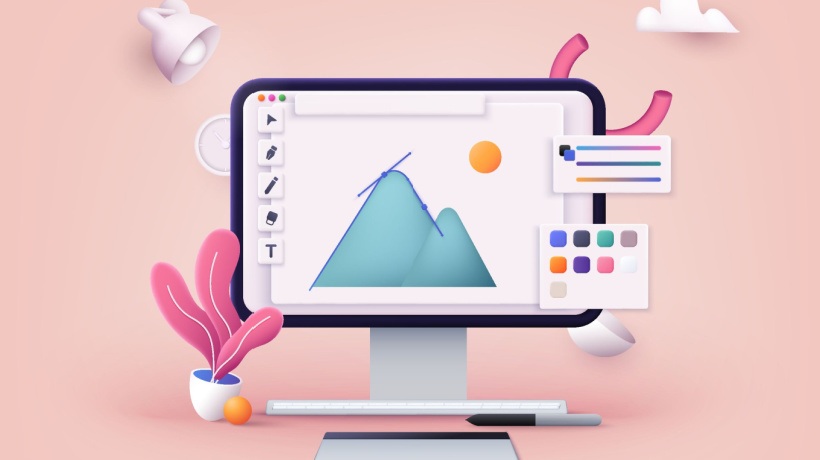The Relationship Between Instructional And Graphic Design
Instructional Design and graphic design are distinct fields that often work together to create effective and engaging educational materials. While there may be some overlap in the skills and knowledge required for each discipline, they have unique focuses and goals that make them complementary rather than interchangeable. In a higher education work environment, Instructional Designers need to understand the role of graphic design in creating effective learning experiences, but they should be expected to have a limited amount of graphic design skills.
What Is Instructional Design?
Instructional Design is a process that involves designing and developing educational materials and experiences that are effective, efficient, and engaging. It aims to create learning experiences that help learners achieve specific learning objectives or outcomes. Instructional Designers work closely with Subject Matter Experts to analyze the learning needs of a particular audience, identify learning goals, and develop instructional strategies and materials that will help learners achieve those goals.
It also involves various tasks, such as conducting needs assessments, developing learning objectives, designing instructional materials, creating assessments, and evaluating the effectiveness of instructional materials. Instructional Designers must also have a strong understanding of learning theories and principles and the ability to apply those theories and principles to create effective learning experiences.
What Is Graphic Design?
Graphic design, on the other hand, is a discipline that focuses on creating visual content for various media, including print and digital. Graphic designers use typography, color, imagery, and other design elements to create visual communications that are engaging, effective, and aesthetically pleasing. It can include various activities, such as creating logos, designing websites, developing marketing materials, and creating visual aids for presentations.
Graphic designers must understand design principles, such as composition, balance, and hierarchy. They must also have a strong understanding of color theory, typography, and other design elements. In addition, graphic designers must be proficient in various software tools, such as Adobe Illustrator, Photoshop, and InDesign.
How Do They Work Together?
Instructional Designers and graphic designers often work together to create effective and engaging learning materials. Graphic design can play an essential role in Instructional Design by helping to create materials that are visually appealing, easy to understand, and engaging for learners. For example, graphic design can create diagrams, infographics, and other visual aids that help learners understand complex concepts.
Instructional Designers can work closely with graphic designers to develop a visual style or theme for educational materials. This can help create a consistent look and feel across different types of materials, making it easier for learners to engage with the content. Graphic designers can also help to create engaging visual elements, such as illustrations or animations, that capture learners' attention and keep them engaged. However, it is essential to note that graphic design is just one aspect of Instructional Design. While visual design is vital for creating effective learning experiences, it is just one piece of the puzzle. When designing educational materials, instructional strategies, assessment methods, and evaluation criteria, Instructional Designers must also consider other factors.
Is One A Part Of The Other?
While graphic design can play an important role in Instructional Design, it is essential to recognize that it is a distinct discipline with its own set of skills and knowledge. Instructional Designers may have some graphic design skills or an art background, but they are not necessarily expected to be experts in graphic design.
Instructional Designers should have a basic understanding of graphic design principles and be able to communicate effectively with graphic designers. This helps ensure that the visual design of educational materials aligns with the instructional goals and objectives. However, Instructional Designers should be expected to have a different level of expertise than a professional graphic designer.
Should Instructional Designers Be Expected To Have Graphic Design Skills?
While it may be helpful for Instructional Designers to have some basic graphic design skills, it is not necessarily a requirement for success in the field. Instructional Designers should focus on developing their expertise in Instructional Design principles and strategies rather than trying to become experts in graphic design.
Occasionally, organizations may have dedicated graphic design teams that work with Instructional Designers to create visual materials. In other cases, Instructional Designers may work with freelance graphic designers or use pre-designed templates to create visual materials.
Ultimately, the most important thing is creating effective, engaging educational materials and aligned with instructional goals and objectives. Instructional Designers should work with graphic designers, Subject Matter Experts, and other stakeholders to create learning experiences that meet the target audience's needs.
Conclusion
Instructional Design and graphic design are distinct fields that often work together to create effective and engaging educational materials. While there may be some overlap in the skills and knowledge required for each discipline, they have unique focuses and goals that make them complementary rather than interchangeable.
In a higher education work environment, Instructional Designers should have a basic understanding of graphic design principles and be able to communicate effectively with graphic designers. However, they should not necessarily be expected to have extensive graphic design skills. Instead, Instructional Designers should focus on developing their expertise in Instructional Design principles and strategies and work closely with graphic designers and other stakeholders to create effective learning experiences. By leveraging the strengths of both Instructional Design and graphic design, organizations can create educational materials that are engaging, effective, and aligned with instructional goals and objectives.

